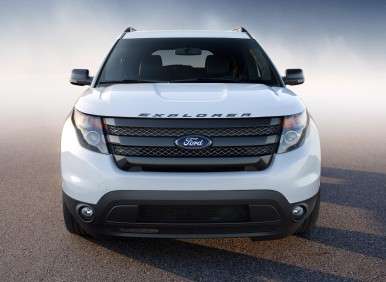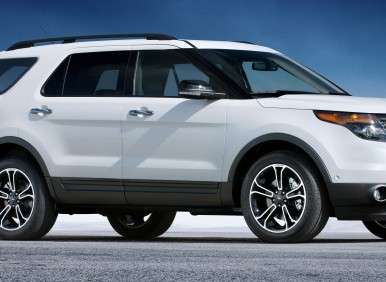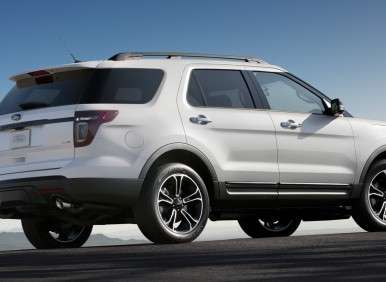Recent Articles
Popular Makes
Body Types
Blue Oval Breaks out 2013 Ford Explorer Sport
Performance-tuned Crossover Boasts 365 hp, Best-in-class MPG

The EPA recently announced its fuel-economy ratings for the 2013 Ford Explorer Sport, and the high-powered hauler was awarded grades of 16 mpg city/22 mpg highway. Those numbers may seem a long way behind the 20 mpg city/28 mpg highway posted by the Explorer with its 2.0-liter EcoBoost I4 engine, but the result is still a best-in-class performance—just in a different class.
That’s because the Explorer Sport has graduated to the big time, with a 3.5-liter EcoBoost V6 that delivers a hefty 365 hp and 350 lb.-ft. of torque. It’s a boost of 75 hp and 95 lb.-ft. of twist as compared to the vehicle’s standard V6, but the Sport model loses just a single mpg in the EPA’s city/highway ratings. Further, it also gains a unique version of the Explorer’s innovative Terrain Management System, retuned to handle the increased power beneath the hood, as well as an upgraded SelectShift six-speed automatic transmission with paddle shifters and a more aggressive 3.16:1 final drive ratio.
2013 Ford Explorer Sport: Beyond the Powertrain
The 2013 Ford Explorer Sport looks the part, too, by showing off a new exterior design scheme that goes heavy on the black and chrome. The painted grille, exclusive liftgate applique and outside (heated) mirrors all wear the former, as do the Explorer’s lower bumpers, wheel-lip moldings and body-side cladding, and the headlights and LED taillamps get the black-out treatment, too. The result owes much to the look of traditional SUVs, but Ford went with the shiny stuff for the exhaust outlets and exterior door handles, providing premium design cues to complement the vehicle’s athletic appearance.
Front, heated sport seats are standard in the cabin, where Ford deploys a typically rich list of tech advantages that also includes Sync with MyFord Touch, a premium Sony sound system with media hub, and a rearview camera—all included with the Explorer Sport’s MSRP of $40,720. In addition, for those who demand cutting-edge safety measures, Ford’s Blind Spot Information System, adaptive cruise control, and inflatable seatbelts for the second row (outboard positions) are all available, and so are creature comforts like a dual-panel moonroof, ambient lighting and adjustable pedals with memory functionality.

2013 Ford Explorer Sport: Rating the Rivals
Now, as implied at the start, the 2013 Ford Explorer Sport moves into a new segment with its new powertrain, although perhaps “niche” is the better word here. After all, other high-performance, seven-passenger SUVs are rather few and far between. Ford explicitly compares the Explorer Sport to the Dodge Durango and Jeep Grand Cherokee (each with the 5.7-liter HEMI V8), along with the Land Rover Range Rover Sport (with a supercharged 5.0-liter V8); but the Jeep and Land Rover actually offer just two rows. On the other hand, the Explorer Sport itself actually offers “5+2” seating, with a fairly narrow third row that sets it apart from bigger beasts like the Mercedes-Benz GL-Class. But with no other mainstream makers offering a sport version of their three-row, AWD vehicles, we’ll use the Land Rover (and M-B) in our comparo chart anyway—and drop in the V6 Durango, too:
Vehicle
Price
Power (hp/lb.-ft.)
EPA Ratings
Explorer Sport
$40,720
365/350
16/22
Durango V6
$31,195
280/260
16/23
Durango R/T (V8)
$38,395
390/407
13/20
Grand Cherokee
$37,365
390/407
13/20
GL450
$63,900
362/406
14/19
Range Rover Sport
$76,495
510/625
12/17
The benefits—and disadvantages—of the Explorer Sport are clear, as is its place in ye olde sweet spot of the three-row, hi-po SUV segment/niche/class.
